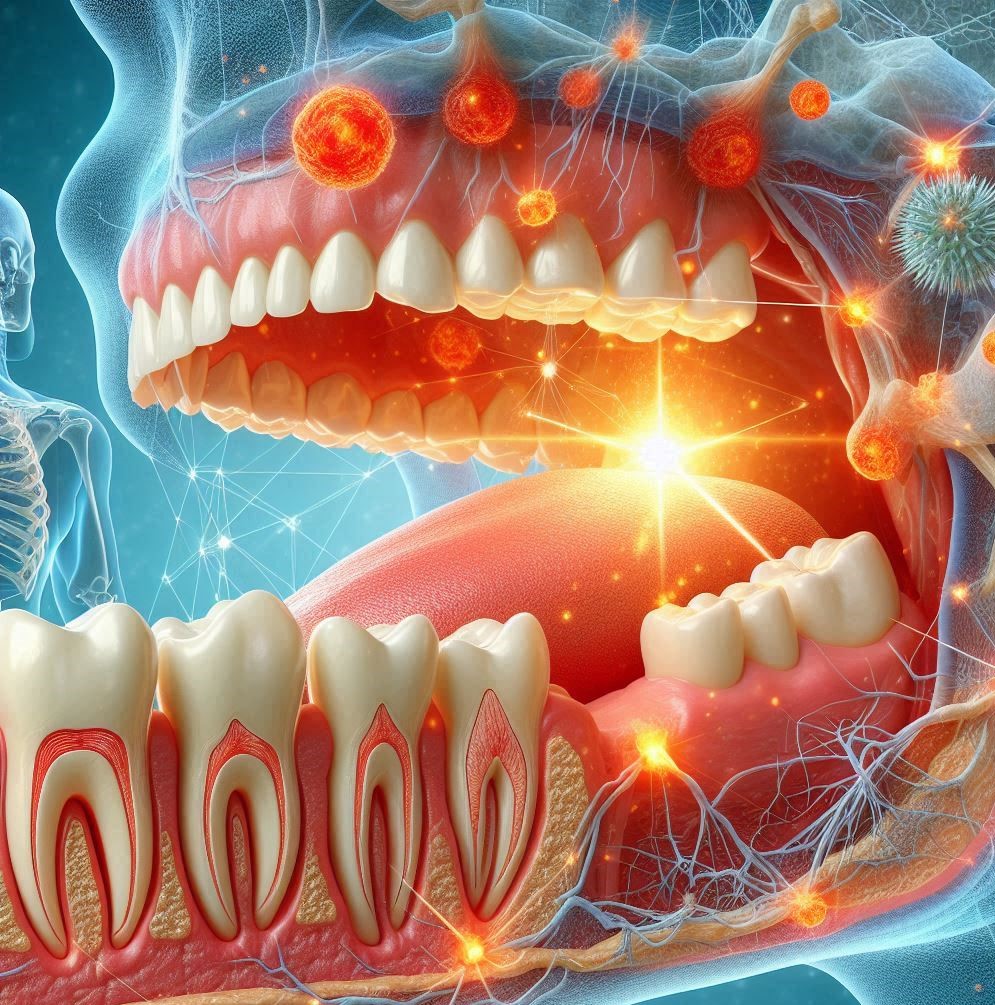Dental fillings have revolutionized the way modern dentistry handles tooth decay. They provide an effective solution to restore the function and structure of teeth that have been damaged by cavities, trauma, or decay. However, like any medical procedure, dental fillings come with certain risks and complications. Understanding these potential issues and how to manage them effectively can help you maintain optimal oral health.
In this detailed guide, we will explore the complexities surrounding dental fillings, covering the types of fillings, the risks and complications they may cause, how to prevent these complications, and why fillings sometimes need replacement. We will also look at the materials used, the steps involved in placing a filling, and strategies to ensure long-lasting results.
Understanding Dental Fillings
Dental fillings are a restorative treatment used to repair teeth damaged by decay. The goal is to remove the decayed portion of the tooth and fill the resulting space to restore the tooth’s original function and prevent further damage. Fillings are also used to repair cracked or broken teeth.
Types of Dental Fillings
There are several types of dental fillings, each with its unique advantages and disadvantages. The choice of material often depends on the location of the cavity, the patient’s budget, and aesthetic preferences. Below, we will expand on the different types of fillings available:
Amalgam Fillings
Amalgam fillings are made from a mixture of metals, including silver, mercury, tin, and copper. They have been used for over 150 years due to their durability and cost-effectiveness.
Pros:
- Durability: Amalgam fillings are highly durable and resistant to wear, making them an excellent choice for molars, which experience heavy chewing forces.
- Cost-effective: Amalgam is one of the least expensive filling materials available.
- Longevity: Properly placed amalgam fillings can last 10-15 years or more.
- Resistance to Leakage: Amalgam is relatively impervious to bacteria and decay, especially in large cavities.
Cons:
- Aesthetic appearance: Amalgam fillings are silver in color, which may be noticeable, especially in the front teeth.
- Expansion and contraction: Amalgam fillings expand and contract with temperature changes, potentially causing cracks in the tooth.
- Mercury content: Although studies have shown that the mercury in amalgam is safe for most people, there are concerns about its potential toxicity, particularly in pregnant women or individuals with mercury sensitivity.
Composite Fillings
Composite fillings are made from a mixture of resin and filler materials, designed to match the natural color of teeth. These fillings are often used for cavities in visible teeth.
Pros:
- Aesthetic appearance: Composite fillings are virtually indistinguishable from natural teeth, making them an excellent choice for front teeth or other visible areas.
- Bonding to the tooth: Composite resin bonds directly to the tooth, providing added strength and support.
- Customization: Composite fillings can be easily molded to the shape of the cavity, allowing for better precision in the restoration.
Cons:
- Durability: While composite fillings are durable, they typically last between 5-10 years, which is shorter than amalgam fillings.
- Cost: Composite fillings are generally more expensive than amalgam fillings due to the more labor-intensive placement process.
- Staining: Over time, composite fillings may become stained or discolored, especially if exposed to coffee, tea, or tobacco.
Ceramic Fillings (Porcelain)
Ceramic fillings are made from porcelain, providing a natural look and excellent strength.
Pros:
- Natural appearance: Ceramic fillings are highly aesthetic and closely resemble the natural color of teeth, making them ideal for visible cavities.
- Durability: Porcelain is highly durable and resistant to wear and staining.
- Biocompatibility: Ceramic fillings are less likely to cause allergic reactions or irritations.
Cons:
- Cost: Ceramic fillings are often the most expensive option, as they require specialized lab work and longer time in the dentist’s office.
- Brittleness: Although porcelain is durable, it is more prone to breaking or chipping compared to metal fillings.
Gold Fillings
Gold fillings are made from a gold alloy, which includes other metals such as copper, silver, and palladium.
Pros:
- Durability: Gold is one of the most durable materials for fillings, lasting 15-30 years or more with proper care.
- Biocompatibility: Gold fillings are well-tolerated by the body and are less likely to cause allergic reactions.
- Corrosion resistance: Gold is highly resistant to corrosion, making it ideal for long-term use.
Cons:
- Aesthetic concerns: Gold fillings are visible, making them less suitable for visible teeth.
- Cost: Gold fillings are among the most expensive options due to the materials and labor involved in creating them.
- Multiple visits: The process of placing gold fillings requires more than one dental appointment since they are custom-made in a lab.
Risks and Complications of Dental Fillings
While fillings are highly effective in restoring damaged teeth, they are not without risks. Some complications can arise either during the filling process or after the filling is placed. Below, we will explore the most common risks and complications associated with dental fillings.
Filling Failure
Filling failure occurs when the filling no longer functions effectively, either because it has become dislodged, cracked, or deteriorated. The failure of a filling can occur for several reasons:
Causes:
- Wear and Tear: Over time, fillings experience wear from chewing forces. If a patient frequently chews hard foods, grinds their teeth, or suffers from jaw clenching, the filling may wear down prematurely.
- Improper placement: Fillings that are not correctly shaped or placed can loosen, resulting in bacteria entering the tooth.
- Temperature fluctuations: Some filling materials, particularly amalgam, expand and contract with temperature changes, which can lead to cracks in the surrounding tooth structure.
Management:
- If a filling fails, it should be replaced promptly to prevent further decay or tooth damage. Regular dental checkups are essential to identify early signs of failure and avoid more severe complications.
Cracking or Fracturing of the Tooth
A crack or fracture around a filling can occur due to several factors, including the material of the filling itself or the forces exerted on the tooth during chewing.
Causes:
- Expansion and contraction: Materials like amalgam can expand and contract with temperature changes, placing stress on the surrounding tooth structure, which may lead to cracks.
- Biting forces: Hard foods or habits like tooth grinding can cause excessive pressure on the tooth, leading to fractures.
- Weakened tooth structure: Extensive decay or an improperly placed filling can weaken the tooth, increasing the risk of cracking.
Management:
- Cracks or fractures should be evaluated and treated by a dentist. Depending on the severity, a new filling or crown may be required to restore the tooth.
Recurrent Cavities (Secondary Decay)
Secondary decay, or recurrent cavities, occur when bacteria infiltrate the tooth around an existing filling. This is one of the most common reasons why fillings need replacement.
Causes:
- Leakage: As fillings age, they may shrink or wear down, leaving small gaps where bacteria can enter.
- Plaque buildup: Poor oral hygiene around the filling can lead to plaque accumulation, which increases the risk of decay.
- Dental erosion: Exposure to acidic foods or beverages can slowly erode the tooth structure surrounding the filling, allowing bacteria to penetrate.
Management:
- Regular dental checkups can help identify early signs of secondary decay. If decay is detected around the filling, the dentist will remove the old filling, clean out the decay, and place a new filling.
Sensitivity and Discomfort
Some patients may experience sensitivity after a filling procedure. Sensitivity to hot, cold, or sweet stimuli is common, especially in the first few days following the placement of a filling.
Causes:
- Nerve irritation: The filling may irritate the tooth’s nerve, leading to temporary sensitivity.
- High filling: If the filling is placed too high, it can cause discomfort by putting excessive pressure on the adjacent teeth.
Management:
- Sensitivity usually subsides after a few days as the tooth heals. In cases of persistent sensitivity, your dentist may suggest fluoride treatments, desensitizing toothpaste, or adjustments to the filling.
Allergic Reactions
Allergic reactions to filling materials, particularly amalgam, are relatively rare but can occur in some individuals.
Causes:
- Mercury: The mercury component in amalgam fillings can cause allergic reactions in sensitive individuals.
- Other metals: Some people may be allergic to other metals in gold or amalgam fillings, including copper or nickel.
Management:
- If an allergic reaction occurs, the patient should consult their dentist, who may recommend replacing the filling with a more biocompatible material like composite or ceramic.
Tooth Discoloration
While composite fillings are designed to match the color of natural teeth, they can discolor over time, especially with exposure to staining substances like coffee, tea, or tobacco.
Causes:
- Staining substances: Foods and beverages such as coffee, red wine, or smoking can stain composite fillings.
- Natural wear: The resin material may become dull or lose its sheen over time.
Management:
- Good oral hygiene, including regular brushing, flossing, and professional cleanings, can help prevent staining.
- For patients concerned about discoloration, whitening treatments can be used to brighten the teeth surrounding the filling.
Preventing Filling Complications
Maintaining good oral hygiene practices and attending regular dental checkups are key to preventing filling-related complications. Here are some tips for preventing common issues:
Proper Oral Hygiene
Brush your teeth at least twice a day using fluoride toothpaste, floss daily, and use mouthwash to kill bacteria. This helps prevent plaque buildup and reduces the risk of secondary decay around fillings.
Regular Dental Checkups
Regular visits to the dentist for checkups and professional cleanings are essential for identifying any potential problems with fillings. Your dentist can detect early signs of wear, decay, or damage and recommend preventive measures or timely treatment.
Addressing Filling Failure
If you notice that your filling is loose, cracked, or falling out, it is essential to see a dentist as soon as possible. A failed filling can expose the underlying tooth to further decay, and it may cause pain or discomfort. The dentist will evaluate the situation and may recommend replacing the filling with a new one.
To prevent filling failure, it’s important to follow the dentist’s aftercare instructions and avoid biting down on hard objects, such as ice or hard candies, that could damage the filling.
Dealing with Cracks or Fractures
If you experience a crack or fracture in a filled tooth, visit your dentist immediately. In some cases, a crack may be repairable with a new filling or crown. If the fracture is severe, a root canal or extraction may be necessary.
To reduce the risk of fractures, avoid chewing on hard foods and consider using a mouthguard if you grind your teeth at night.
Avoiding Harmful Habits
Avoid biting hard objects like ice, pens, or fingernails, as these can damage both fillings and teeth. Additionally, if you grind or clench your teeth, especially at night, a custom-made mouth guard can protect your fillings from excessive pressure.
Healthy Diet
A balanced diet low in sugary or acidic foods and drinks can help protect your fillings and prevent tooth decay. Foods rich in calcium and fluoride, such as dairy products and leafy greens, promote healthy teeth and gums.
Why Fillings Sometimes Need Replacement
Fillings are designed to last for many years, but they eventually wear down and may need to be replaced. The need for replacement can be due to several factors, including:
Wear and Tear
All fillings are subject to wear and tear over time. Chewing, grinding, and other forces exerted on the fillings can cause them to degrade, leading to the need for replacement.
Secondary Decay
If bacteria infiltrate the area around the filling, decay may occur beneath the filling. If this happens, the old filling needs to be removed, and the cavity must be cleaned before placing a new filling.
Cosmetic Concerns
Some patients choose to replace amalgam fillings with more aesthetic materials, such as composite or porcelain, particularly if the fillings are in visible areas like the front teeth.
Structural Damage
In some cases, the tooth structure may be compromised to the point where the filling can no longer provide adequate support. This can lead to the need for more substantial restorative work, such as crowns or root canals.
Changes in the Tooth Structure
As the tooth matures or undergoes further wear, the structure of the tooth may change, affecting the fit of the filling. In these cases, a new filling may be needed to restore the tooth properly.
Conclusion
Dental fillings play a critical role in modern dentistry by restoring decayed or damaged teeth, but they are not without risks and complications. Understanding the potential issues related to fillings, how to prevent them, and how to manage them when they arise can ensure the longevity of your dental restorations and maintain optimal oral health.
By maintaining good oral hygiene practices, attending regular dental checkups, and following your dentist’s advice, you can minimize the likelihood of filling failure, recurrent cavities, or discomfort.
SOURCES
American Dental Association. (2022). Dental fillings: Types of dental fillings. Journal of the American Dental Association, 153(8), 735–740.
Bergman, M., & Levin, L. (2021). Dental material science and its impact on restorative dentistry. Journal of Clinical Dentistry, 43(2), 112–118.
Bishara, S. E., & Ostby, B. M. (2019). The role of dental fillings in preserving tooth structure: A comprehensive review. International Journal of Dentistry, 2019, 1–9.
Clark, D. L., & Yip, K. (2020). The long-term success of dental fillings: Factors influencing longevity and failure rates. Clinical Oral Investigations, 24(7), 2171–2183.
Friedman, M. W., & Ray, H. M. (2018). Risk factors in the longevity of dental fillings. Journal of the American Dental Association, 149(5), 375–382.
Goldstein, M., & Schell, R. (2021). Cracking and fracturing of teeth: Causes and prevention strategies. International Journal of Prosthodontics, 34(3), 267–273.
Johnson, M. B., & Rosen, P. S. (2017). Allergic reactions to dental materials: A review of clinical outcomes and management strategies. Journal of Oral Allergy, 8(1), 47–53.
Kurtzman, M. P., & Huber, R. G. (2020). Advances in restorative dentistry: New materials and techniques for dental fillings. Restorative Dentistry Review, 30(6), 212–223.
Lynch, C. D., & McConnell, R. J. (2022). Composite fillings: A review of aesthetic and mechanical properties. Journal of Esthetic and Restorative Dentistry, 34(5), 460–465.
Ravindran, S., & Alexander, J. R. (2019). Managing the failure of dental restorations: Diagnosis and solutions. British Dental Journal, 227(8), 616–620.
Smith, A. W., & Thomas, C. A. (2021). The impact of diet and oral hygiene on dental filling longevity. Journal of Clinical Oral Investigations, 25(10), 3125–3131.
Wilson, R. D., & Scully, C. (2021). Ceramic and composite dental fillings: Materials and clinical indications. Australian Dental Journal, 66(3), 260–267.
Zarb, G. A., & Bolender, C. L. (2020). Prosthodontic treatment for edentulous patients: The foundation of the care continuum. Elsevier Health Sciences.
HISTORY
Current Version
February 19, 2025
Written By:
SUMMIYAH MAHMOOD




